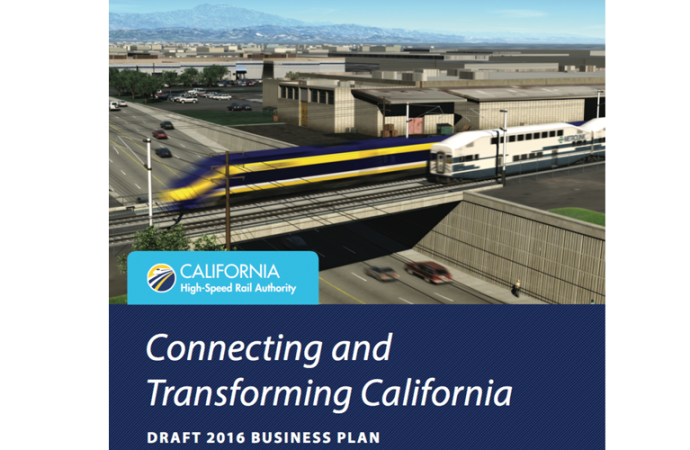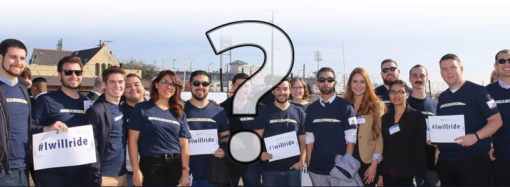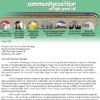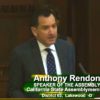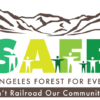Review of California’s High-Speed Rail Authority’s 2016 Business Plan- Part 2
MORE SPECIFICS ABOUT THE BUSINESS PLAN
CHSRA 2016 Draft Business Plan: a/o Feb. 18, 2016
In the first article we talked about initial impressions of the business plan and the lack of credibility in regard to the source of the capital needed to build the project. The myriad of lawsuits was also outlined as well as the challenges the Authority faces in “moving forward.”
Let’s now look a little deeper.
Ridership:
Ridership is an extremely important element of the business plan. If you don’t have enough riders, you won’t have the revenue and the high-speed rail program may become a burden to the taxpayers. In addition, unrealistic operating costs add to the real danger of operating subsidy, which is strictly forbidden by Prop 1A.
In order to understand the Authority’s new ridership numbers, it’s insightful to look at past projections. In 1996, Charles River Associates conducted the first statewide high-speed rail ridership study for the Authority’s predecessor – the Intercity High-Speed Rail Commission. Quoting from the Commission’s High-Speed Rail Summary Report and Action Plan (December 1996): “To ensure investment grade results, the forecasts were subject to extensive peer review.” This investment grade ridership study envisioned 1.9 million riders on the San Francisco to Bakersfield segment. These riders were forecast when the system connecting Los Angeles to the Bay Area would be fully built out in 2015, meeting the needs of a population of 45.7 million Californians.
Hindsight proved that the California Department of Finance’s Demographic Research Unit (DRU), which provided this forecast in May 1993, was wildly optimistic with their population forecast. Now in the 2016 Business Plan the Authority envisions 11 million riders a year – 6 times the original estimate – for that same segment in 2028, while the DRU now predicts a state population of only 43.4 million. Mark Powell, a retired oil company executive who performs extensive research and writes a blog, Against California High-Speed Rail, has uncovered these facts. He believes that the Commission’s contractor, Charles River Associates, back in 1996, was more objective than today’s projections because construction costs were expected to be much lower and there would have been little pressure to inflate ridership numbers to justify the project. The ridership numbers went up and down in subsequent years but always higher than Charles River Associates’ 1996 original 1.9 riders for the San Francisco to Bakersfield segment. As a point of reference, California’s population in 2015 was actually 39 million, not the projected 45.7 million, and is now expected to grow to 52 million by 2060.
A critical look at the 2016 Business Plan shows how the Authority envisions ridership of the mature Phase 1 system ramping up at 1.1% per year during the years 2035 and 2060 with no signs of slowing. In fact, the current DRU forecast (December 2014) shows that California’s population is expected to grow at less than half this rate during this period and slowing to only .3% per year by 2060. “The Authority’s excessive ridership growth rate yields higher profits that play into the Authority’s lie about private capital someday funding construction,” declares Powell.
Environmental work:
The environmental work is not completed for the San Francisco to San Jose or San Jose to Merced sections, but the reductions in cost in the business plan indicate they are doing “value engineering” in the San Jose area. Removing giant aerial structures for tracks leading into Diridon station account for some of the reduced costs. The business plan explains that the new cost estimates are based on changes in the environmental work that will be covered in future meetings, which means they are basing their costs on changes that have not been made public. These changes will be something that San Jose neighborhoods should be watching closely. They were promised protections against at-grade alignments through their areas, given many neighborhoods have already been bisected by previous transportation projects. Without details about exactly what they are changing to reduce costs, it is impossible to know what the effects will be.
Click for detailed information about the cost reductions for the plan in these supporting documents.
The cost reductions and value engineering reflected in these detailed documents shows that the current estimates reflect the most bare-bones version of the system in which they select the cheapest alternative in virtually every scenario to keep the costs down. For example, the plan only includes $500 million total to cover the cost of 44 grade separations necessary to run trains between San Francisco and San Jose. Without these grade separations, the number and speed of the trains will be limited, which will impact ridership and revenue capabilities of the system. (It will also close the crossings to traffic much longer, but that’s a topic for another day.) However, the $500 million isn’t even included in the $2.8 billion in additional money they would need to complete the San Francisco to Bakersfield line. This means that $2.8 billion is still a low-ball estimate and it is unclear how much more would be needed to run an attractive schedule that would presumably attract private investors.
From an environmental perspective, it is unclear if having interim stations in Madera Acres and the outskirts of Shafter is legal given they weren’t studied under CEQA or NEPA. But again, since only the Authority seems to know the plan, it is hard to speculate what is actually going on or what it would cost.
Nadia Naik of Californians Advocating Responsible Rail Design (CARRD), an organization that fights for proper process and open transparency, offered this about the new plan. “It is interesting to note that the biggest complaint of the 2012 and 2014 business plans were that the cost estimates didn’t accurately reflect the engineering work that was being done at the time and being discussed publicly or in consultant reports. The 2016 business plan seems to have cost estimates based on engineering work that has not been made public, which of course makes it difficult for anyone to confirm or dispute.”
Friends of Caltrain, a local transit advocacy group in Northern California and advocates for Caltrain’s electrification has concerns. They believe there are a few kinks in the plan.
They say without appropriate passing tracks, the Caltrain schedule could be less than desirable. The Rail Authority says that this route will fill in the housing gap in the Bay Area, allowing people to live in the Central Valley and commute to Silicon Valley. However, as pointed out by Friends of Caltrain, “the pricing structure assumed in the revenue model isn’t designed for commuting, with an $83 fare from Fresno to San Jose.”
Note: Do the math; that would be over $30,000 a year for their commuting expense but of course monthly passes will bring the cost down a bit. But think about it, will these cool twenty and thirty something year old employees of these high-tech companies who are currently willing to ride a bus into Silicon Valley daily in order to live in San Francisco choose Fresno as their new home? It’s doubtful.
Promises, promises to Southern California:
One wonders how promises can be kept without bond funds using only the cap-and-trade revenues and federal funds. Remember, the cap-and-trade funds must first be spent in the Central Valley as a match for federal grant dollars.
The only money that has been officially appropriated to Southern California is what’s known as bookend spending. $500 million was appropriated to Southern California, but the rail Authority admits on page 3 of their September 2015 Semi Annual Operations Report that they can’t get the bond funds because lawsuits are preventing access. So where is the money for Southern California?
Author Susan MacAdams and board member of the Train Riders Association of California, a rail advocacy group based in Sacramento, outlines what the Authority is planning to do with state funds in Southern California in this California Rail News article.
MacAdams asserts that if HSR comes to the South, those improvements that they are planning to build will have to be torn out to accommodate the high-speed rail trains. As an example in a letter she wrote to the Burbank mayor last month she said,
“CAHSRA, Caltrans and Metro are not coordinating the building of infrastructure projects using federal, state and local funding. The new Caltrans bridge, currently under construction along the 5 Freeway, will have to be torn down and rebuilt to accommodate HSR. The bridge cannot support the catenary poles for electrification. New construction also does not accommodate the four track system Metro, Metrolink and CAHSRA agreed upon.”
See pages 3-5 of her article in which she reveals the 10 fatal flaws of the plans. A pure waste of money.
William Grindley, co-author of many financial reports on the high-speed rail project, believes,
“Since the whole document is nothing more than marketing glitz to have the lazy Legislature let them continue to spend money from 49 other states, they [the rail authority] will say anything so they won’t anger the SoCal legislators who wanted the fed $s for pork in their Districts.”
Prop 1A bond funds:
Prop 1A Bond funds have been used for planning and environmental work. However, access to the funds has been held up because the rail authority has not met the terms and conditions of Prop 1A.
A technical point: Prop 1A requires two funding plans. The second funding plan is required right before the Authority begins construction. The Authority produced the first funding plan in November 2011 and it included both the Initial Operating Segment South (IOS) and the IOS heading north. Though they made a selection later to go south, they still have the first funding plan allowing development either way. They still must come up with Funding Plan #2 regardless of where they build, if, in fact, they want to use bond funds for construction purposes. This second funding plan requires all environmental work be completed and the identification of the funds to build, in this case, all 250 miles. It’s not a speculative thing, either. They can’t say, we’ve identified the source of the funds but we haven’t figured out how to transfer them into our bank account yet. Seriously, Prop 1A says, among many requirements, that, “The sources of all funds to be invested in the corridor, or usable segment thereof, and the anticipated time of receipt of those funds based on expected commitments, authorizations, agreements, allocations, or other means.”
What’s not in the Business Plan:
Missing is the explanation of the outstanding lawsuits which includes the devastating result of the partial win of the first Tos/Fukuda/Kings County case. Not everything was overturned when the case was appealed. The Authority cannot access bond funds today as a result of the first part of the case, and they have admitted this in writing in their year-end Operations Report.
Missing is how the Authority plans to address security of the train. “Imagine the terrorists’ eyes lighting up when they see a beautiful shiny blue and gold bullet train flying down the track at over 200 miles per hour. It is a dream target for them,” says Ted Hart, Sacramento retired business executive in the field of construction and who has spent 30 yrs. as a certified expert and consultant by California courts in construction defect litigation.
Missing is a real plan to address the absence of grade separations. Robert S. Allen, former Bart Director for 14 years, has warned the Authority at several board meetings about what the lack of grade separations will produce.
“CHSRA plans to run high-speed rail trains on Caltrain tracks with their dozens of commuter stations and grade crossings. This appears to make HSR vulnerable to accidents, suicides, and ensuing train delays- being neither safe nor reliable. HSR really needs a secure, grade-separated and fenced track.”
Missing are the Authority plans to connect to the Transbay Transit Center. Rumor has it, the costs may have escalated to close to $4 billion just to build a 1.5 mile tunnel to the Transbay Terminal from Caltrain’s 4th and King station.
Missing are the Phase 2 costs which will eventually service Sacramento and San Diego. These are required to be part of each business plan and they are not included and haven’t been for years.
Original Intentions:
It was never envisioned that state funds are matched with other state funds. Funding was always supposed to be shared responsibility to build the system. Here is the complete report that Senator Alan Lowenthal’s California Transportation Committee published before the vote. Senator Lowenthal wrote the preamble himself showing the intentions of the Senate group who authored the bond measure language and supported bill AB 3034.
“This farsighted transportation project, however, is not being developed as a conventional public works project to be built with pay as you go funding, or by relying on public debt financing. Instead, the Authority is offering California’s voters a business proposition. Should the voters approve the $9.95 billion measure on November’ s ballot, the Authority is anticipating using the bond revenues and future federal funds to attract a substantial amount of private capital. The Authority’s underlying assumption is that the demand for high-speed rail in California is so strong that it will attract a private consortium with the resources to design, construct, finance, and operate the high-speed project under the terms of a long term franchise.” June 2008
Suffice it to say, what’s going on today isn’t what the creators of the rail project envisioned in 2008.
The Authority also baked in a “CYA” statement on page 67 of the new business plan just in case history proves the Rail Authority didn’t get it right.
“All dates and numbers presented in this Draft 2016 Business Plan are the best estimates we have available at this time but they are subject to change based on both internal and external factors.”
Attorney Mike Brady, co-counsel on the Tos/Fukuda/Kings County cases doesn’t mince words about the new plan.
“This is a huge setback and admission of defeat on the part of the Authority; 8 years after Prop 1A was passed, and after wastefully spending billions, the Authority in one fell swoop ABANDONS southern California and switch to a route that starts 25 miles outside Bakersfield and travels to San Jose. That’s it!”
“Why? Because they realized they cannot get over or under the mountains of So California and concealed this for 25 months from the Legislature, from Congress, and from the public. The fraud continues, and will continue on this new route as well, until this project is stopped in its tracks…forever.”
The Authority does seem to be well on their way of espousing the Willie Brown method of building large infrastructure. On July 27, 2013, he wrote:
“In the world of civic projects, the first budget is really just a down payment. If people knew the real cost from the start, nothing would ever get approved. The idea is to get going. Start digging a hole and make it so big, there is no alternative to coming up with the money to fill it in.”

